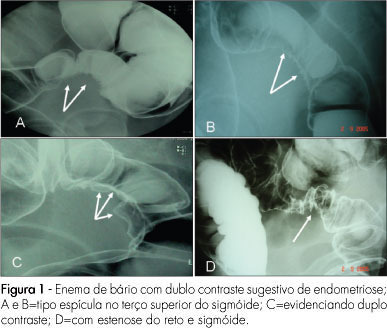Revista Brasileira de Ginecologia e Obstetrícia. 2008;30(8):400-405

PURPOSE: to evaluate the sensitivity, specificity, positive and negative predictive value of double contrast barium enema (DCBE) for the diagnoses of rectum and sigmoid endometriosis. METHODS: prospective transversal study including 37 patients with suspicion of deep endometriosis. Patients were submitted to DCBE, according to the standard technique described in the literature, and then, to laparoscopy. The results of laparoscopy and the DCBE images were interpreted and compared, based on the histological evaluation. Statistical analysis was done by association (χ2 test) and agreement analyses (Kappa’s test). RESULTS: patients’ average age was 35.8±4.4 years old (age group from 28 to 48 years), 85.6% of them being white and 14.4%, black women. Deep endometriosis was confirmed by laparoscopy and histological exam in all the studied patients. Intestinal endometriosis was confirmed by histological exam in 27 women (72.9%) of them. DCBE demonstrated suggestive radiologic signs of intestinal infiltration by endometriosis in 24 women (64.9%) and no signs in 13 women (35.1%). The method sensitivity was 67.5%, specificity 53.8%, positive predictive value, 77.8% and negative predictive value, 70%. Among the 24 abnormal exams, 16 (43.2%) presented radiologic speculum-type image, 16 (43.2%), an image compatible with stenosis, and four (10.8%), double contour. CONCLUSIONS: the DCBE presents high sensitivity and high positive predictive value, in the diagnosis of the rectum and sigmoid endometriosis. Radiologic images speculum and stenosis-type present high sensitivity and positive predictive value for the intestinal infiltration by endometriosis.
Search
Search in:


Comments